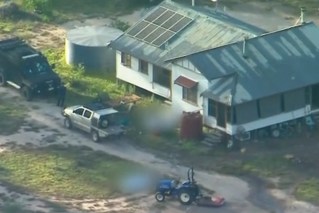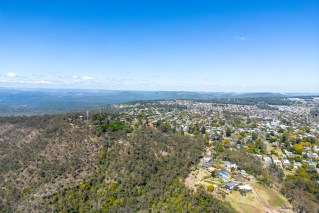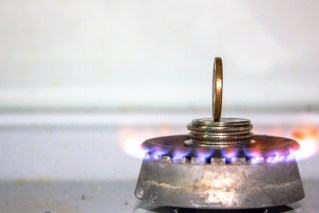Century since Qld disaster killed 75 and changed the mining industry

Seventy-five miners went to work that day, never to return alive. Photo: Qld Gov archive
A graveyard, a smoke stack and the rubble remains of a once busy town are all that’s left to mark the location of one of Australia’s most deadly mine disasters.
It’s been a century since 75 people were killed in a fireball explosion at Mount Mulligan coal mine, about 160km west of Cairns.
Among the native trees and grasses, a plaque names each of the victims, some of them fathers and their sons.
Alic Casloff and Edward Morgan were among the miners who kissed their wives goodbye on September 19, 1921, never to return.
A royal commission into the disaster detailed how the duo collected their carbide lamps and explosives from a storeroom at the mine entrance.
Inside it was hot, dark and dusty and only two ventilation shafts fitted with exhaust fans.
Wooden posts and beams lined the walls and held up the roof with just enough clearance to stand.
A short time after Mr Casloff and Mr Morgan arrived at the coal face, it’s believed an explosive charge detonated.
All-consuming fireball
“The cause of the ignition was the firing of an explosive, either accidentally or otherwise, on top of a large block of fallen machine cut coal, such explosive not having been placed in a shot hole,” the commission’s report reads.
A fireball raced through 6km of mine tunnels, collapsing walls, sucking oxygen and killing all 75 miners working at the time.
Philip Clarke, a doctor who arrived at the scene several hours later was present when eight bodies were brought out.
“They presented with the appearance of having been badly scorched with the flame,” he said.
Two men recovered alive had multiple injuries and later died.
“The pink colour of his lips showed he was suffering from carbon monoxide poisoning,” Dr Clarke said of one of the men.
Eleven bodies were recovered in total.
The commission found “explosives were distributed, carried used and stored underground in a careless manner, without regard to the regulations”.
In memory of those who died, a gathering is planned at Mt Mulligan on Sunday to acknowledge the centenary. The number of people could surpass the township’s population of about 350 at the time of the explosion.
Queensland Resources Minister Scott Stewart says the centenary is significant in light of the death this week of a worker at the state’s Gregory Crinum mine.
The 60-year-old, named as Graham Dawson by some media outlets, was killed – and his 25-year-old colleague was seriously injured – on Tuesday when a roof gave way. His body was finally recovered late on Saturday.
“Everyone has a role to play in keeping our resources workers safe,” Mr Stewart told AAP ahead of the centenary event.
“It will be an honour to speak at this important event honouring those resources workers who have tragically lost their lives.”
Industry reforms
The Mt Mulligan explosion is acknowledged as Australia’s third most-deadly mining disaster.
Recommendations from the royal commission brought significant reform.
“Following the disaster, coal mining-specific legislation was enacted for the first time,” Mr Stewart said.
“The legislation included some of the measures which are now standard industry practice – such as the compulsory use of safety lamps, the banning of naked flames underground, rules for the volume of stone dust allowed and the appointment of mines inspectors.
“Queensland now has the toughest mine safety and health laws in the world – including an offence of industrial manslaughter.”
Mt Mulligan township was abandoned in 1958.
The number of deaths in the 1921 explosion trailed NSW’s 1902 Mount Kembla explosion which killed 96 people, and the 1887 Bulli mine gas explosion with 81 fatalities.
-AAP








